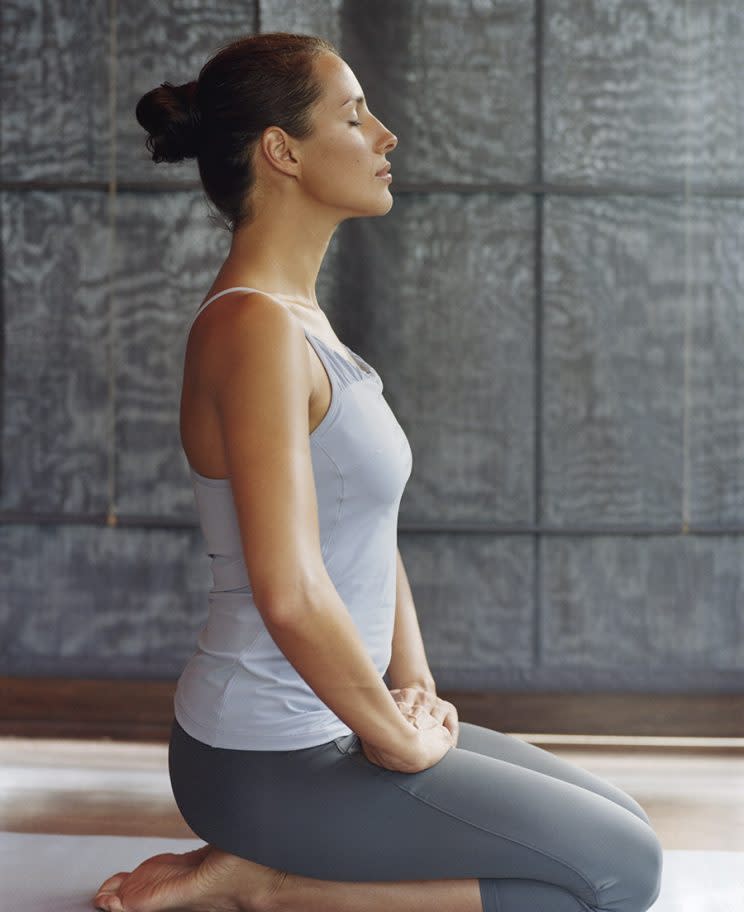Yoga Makes Periods Less Painful, Eases PMS

Do a quick online search of “yoga and PMS,” and you’ll come up with hundreds of thousands of recommendations. There are poses to ease cramps, bloating, bad moods, depression, and every other negative symptom associated with menstruation.
But as with most health practices dubbed “alternative,” there hasn’t been much scientific investigation to back up those claims. Researchers in London reviewed 15 studies that did, however, and the results are largely positive.
This wasn’t a simple task, according to the paper, published in the Journal of Alternative and Complementary Medicine. “Yoga” can mean so many different things to different practitioners — ranging from breathing exercises and meditation to vigorous power yoga styles. The range of symptoms women experience before and during menstruation are just as varied, so there have been studies that looked at pain, water retention, stress, cognitive functioning, general sense of well-being, and all of the above.
Lead author Jennifer Oates, of the Florence Nightingale Faculty of Nursing & Midwifery at King’s College, found a method with which to compare the data from all of these factors to answer the question: “Does published research evidence accord with yoga wisdom, as reflected in journals, websites, and instruction manuals?”
First, here is that yoga wisdom: Linda Sparrowe, coauthor of Yoga for a Healthy Menstrual Cycle, told Yoga Journal that the benefits are both physical and mental. She said practicing asanas releases endorphins that boost your mood, increases blood flow to organs, and relaxes both body and mind.
So, can science evaluate those claims? Sort of. The technical conclusion: “While all studies reported some positive effect of yoga on menstrual distress, as reported by participants and as found by assessing physiological correlates of menstrual distress, the external validity of the studies is limited by the frequency of the interventions used, with daily practice under instruction being an unrealistic expectation of most working-age women.”
In other words, all of these studies pointed to a significant improvement of menstrual-related issues when women participated in various yoga practices, but it’s hard to say which yoga is better, why it is, or if it’s really yoga that’s beneficial or any form of exercise and/or relaxation techniques.
Only one of the studies compared two different yoga techniques, and one other compared yoga to a different type of exercise. It could be that yoga improves the underlying physical causes of menstrual distress or that it improves the mind’s ability to cope with the symptoms.
The good news is that this review points out the value of studying the effects of yoga more thoroughly (and with more “rigorous reporting and methodologic standards,” as Oates puts it). And in the meantime, this looks like a green light for those of us willing to see whether any kind of yoga might help our own specific menstrual symptoms. Science says it can’t hurt, anyway.
Read more from Yahoo Beauty + Style:
Administrator Sues School District After Being Reassigned for Teaching Yoga in School
Is Yoga Broken? Three Teachers Weigh In on the Current State of the Practice
Follow us on Instagram, Facebook, and Pinterest for nonstop inspiration delivered fresh to your feed, every day. For Twitter updates, follow @YahooStyle and @YahooBeauty.

